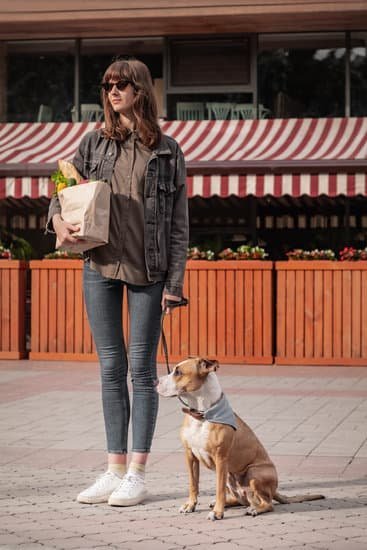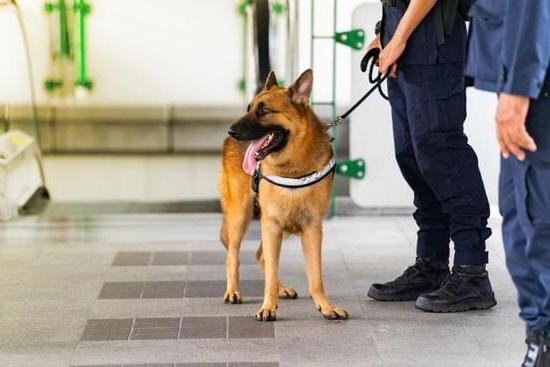?
There is a lot of debate surrounding the topic of crate training dogs. Some people swear by it, while others believe that it is cruel and unnecessary. So, is crate training necessary?
The answer to that question depends on a number of factors, including the individual dog’s personality and temperament, as well as the specific situation. In general, however, crate training can be a very beneficial tool, both for puppies and adult dogs.
One of the main benefits of crate training is that it can help to housetrain your dog. Dogs are instinctively den animals and will often seek out a small, enclosed space to curl up in when they feel tired or stressed. A crate can provide your dog with that sense of security and comfort, and can help to teach them to associate the crate with positive things, such as rest and relaxation.
Crate training can also be helpful in preventing or correcting destructive behaviors. Dogs who are left alone for long periods of time may become destructive as a way of relieving boredom or stress. A crate can provide them with an appropriate place to expend their energy, and can help to prevent them from engaging in destructive behaviors such as chewing on furniture or carpeting.
It is important to note, however, that crate training should not be used as a substitute for proper obedience training. Dogs who are properly trained will know how to behave in a variety of situations, including when they are left alone in a crate. Crate training should be used in conjunction with other obedience training techniques in order to achieve the best results.
So, is crate training necessary? The answer to that question depends on the individual dog and the specific situation. In general, however, crate training can be a very beneficial tool for both puppies and adult dogs.
How To Do Crate Training With A Dog
Crate training is a popular way to housetrain a dog, and can also be used as a place for your dog to relax and feel safe. The key to successful crate training is to make the crate a positive place for your dog.
When you are first starting to crate train your dog, put the crate in a room where the dog spends a lot of time, such as the family room. Put a few treats in the crate and some toys, and let your dog explore the crate on his own. When your dog is comfortable going in and out of the crate, start to close the door for a few seconds at a time. Gradually increase the amount of time the door is closed.
If your dog starts to whine or bark in the crate, don’t let him out until he is quiet. This will help him learn that whining and barking will not get him out of the crate. If your dog is having a lot of trouble staying quiet in the crate, you may need to start with shorter periods of time and work your way up.
Make sure your dog has plenty of opportunities to go outside to relieve himself, and that he is getting enough exercise. A tired dog is less likely to have accidents in the house.
Crate training can be a great way to housetrain your dog, and can also provide a safe place for your dog to relax. The key to successful crate training is to make the crate a positive place for your dog. When you are first starting to crate train your dog, put the crate in a room where the dog spends a lot of time, such as the family room. Put a few treats in the crate and some toys, and let your dog explore the crate on his own. When your dog is comfortable going in and out of the crate, start to close the door for a few seconds at a time. Gradually increase the amount of time the door is closed. If your dog starts to whine or bark in the crate, don’t let him out until he is quiet. This will help him learn that whining and barking will not get him out of the crate. If your dog is having a lot of trouble staying quiet in the crate, you may need to start with shorter periods of time and work your way up. Make sure your dog has plenty of opportunities to go outside to relieve himself, and that he is getting enough exercise. A tired dog is less likely to have accidents in the house.
Cesar Millan Dog Crate Training
There’s a reason Cesar Millan’s dog crate training is so popular – it works! If you’re looking to crate train your dog, there are a few things you need to keep in mind.
The first thing to remember is that dogs are den animals. This means that they instinctually seek out enclosed spaces where they feel safe and secure. By providing your dog with his own crate, you’re mimicking this natural behavior and creating a place where your dog can feel comfortable and safe.
The key to successful crate training is to make the crate feel like a positive place. You can do this by providing your dog with a comfortable bed, toys, and treats. Make sure that you never use the crate as a punishment – this will only make your dog fear the crate and make the training process more difficult.
When you’re first starting out, it’s important to keep the crate in a visible and easily accessible place in your home. This will help your dog associate the crate with positive things, such as treats and playtime. As your dog becomes more comfortable with the crate, you can start to move it to a more hidden spot in your home.
Cesar Millan’s dog crate training is a great way to create a safe and comfortable space for your dog. By following these simple tips, you can help your dog learn to love his crate!
Crate Trained Dogs For Adoption
There is a lot of confusion about crate trained dogs for adoption. Some people think that all dogs who are crate trained are automatically adoptable. Others believe that crate training is a sign that the dog is aggressive or has behavioral problems. The truth is, crate training is a relatively easy way to housetrain a dog and can be very helpful in teaching a dog to settle down and relax.
Many people choose to crate train their dogs because it can be a very effective way to housetrain them. Dogs are naturally den animals and will often instinctively seek out a small, enclosed space to relax in. When you crate train your dog, you are providing him with his own personal den where he can feel safe and secure. This can be especially helpful for puppies who are still learning to housetrain. The crate can be a place where the puppy can go to avoid having accidents in the house.
Crate training can also be helpful in teaching a dog to relax and calm down. Dogs who are anxious or hyperactive can often benefit from spending time in their crate. The crate can be a place where the dog can go to calm down and relax. This can be especially helpful for puppies and dogs who are prone to anxiety or hyperactivity.
Many people choose to crate train their dogs because it can be a very effective way to housetrain them. Dogs are naturally den animals and will often instinctively seek out a small, enclosed space to relax in. When you crate train your dog, you are providing him with his own personal den where he can feel safe and secure. This can be especially helpful for puppies who are still learning to housetrain. The crate can be a place where the puppy can go to avoid having accidents in the house.
Crate training can also be helpful in teaching a dog to relax and calm down. Dogs who are anxious or hyperactive can often benefit from spending time in their crate. The crate can be a place where the dog can go to calm down and relax. This can be especially helpful for puppies and dogs who are prone to anxiety or hyperactivity.
How To Properly Crate Train Your Dog
When crate training a dog, it is important to make sure that the crate is not too big or too small. The crate should be just big enough for the dog to stand up and turn around in.
If the crate is too big, the dog will not feel secure and may not want to use the crate. If the crate is too small, the dog may become cramped and uncomfortable.
When crate training a dog, it is important to start with short periods of time and gradually increase the amount of time the dog spends in the crate.
If the dog becomes agitated or whines when in the crate, it is important to reassure the dog and let him out of the crate.
It is also important to make sure that the dog has plenty of water and food available when he is in the crate.

Welcome to the blog! I am a professional dog trainer and have been working with dogs for many years. In this blog, I will be discussing various topics related to dog training, including tips, tricks, and advice. I hope you find this information helpful and informative. Thanks for reading!





